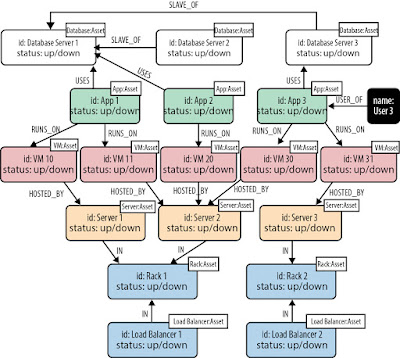February 28, 2016 / Dennis Holinka
Topic 4 – Technology Infrastructure Architecture Layer
This
week's posts go over the Technology Infrastructure Architecture Layer,
the various perspectives, and related reflections in the blog.
The advent of cloud enterprise technology architecture has provided many environmental and ecosystem conscious companies with the opportunity to benefit from the financial savings that comes with the greening of IT. Cloud computing allows technology infrastructure planners consolidate their IT footprints due to an increase in the sharing of hardware resources and improved utilization, spreading fixed costs across a lower number of infrastructure assets, and reduced power usage that amounts to the largest costs in a data center. It is estimated that up to 90% of data center costs goes to power even above the square footage costs of construction and housing of the assets within it. Green IT allows for both power and square footage to be reduced, thereby providing a payback for the data center alignment to the cloud. The cloud allows for optimal resource allocations of workloads across the infrastructure which amounts to having robotic agents consolidating workloads on a denser set of infrastructure both statically by way of consolidation and dynamically throughout the work day. The initial consolidation reduces server footprint by the square foot and the removal of idle electricity on underutilized servers. The dynamic consolidation allows for an even increasing reduction in the use of idle servers which amounts to savings both in electricity to power them but also to cool the facility for their idle cycling.
The universal strategy of the Cloud enabled Data Center is to reduce its “footprint” thereby reducing the true costs of the data center. The footprints that abound are thermal, cooling, energy, physical equipment density, physical equipment space, rack space, system architecture space, software instance space, desktop clients, mobile clients, operating systems, system images, under utilized capacity (leakage), vulnerability (under provisioned capacity for disaster, high availability, and business continuity), IT labor, and service operations costs. The new model for the future generation Data Center must incorporate the following themes in ascending order: Consolidate – Simplify IT delivery, Automate – Rapid, improved, and manageable deployment of IT services, and Innovate – Business innovation goal driven IT alignment. Several existing metrics can help data centers optimize and improve the energy efficiency of their facilities, and on new data center deployments. Data center power and cooling are two of the critical issues facing IT organizations today since it is tied to the largest of costs, that is, power. By controlling costs, IT can manage increased compute, network, storage, power, and increased expenses from growing use. Utilizing cloud computing technologies and approaches, IT can remain competitive while meeting future growing needs of IT.
Figure: Green IT - Forrester Research
https://www.forrester.com/dl/The+Value+Of+A+Green+IT+Maturity+Assessment/-/E-RES55365/pdf
The use of cloud IT to attain greener IT starts with data center and facilities and moves into cloud enabling the enterprise and its supply chain. Eventually, the cloud enabling of the enterprise will extend into its ecosystem to include other entities in its external environment. It follows then, green public infrastructure initiatives will require enterprises to be cloud integration ready to interface with them. This has led to an expansive definition of cloud enablement and the greening of IT to go from Enterprise Technology Architecture to the Enterprise Business Architecture so that integration can occur at higher levels of abstraction. Forrester has prepared what it calls a Green IT Maturity Model to facilitate the evolution of the various layers of IT to evolve to the greener state. The example provided by Forrester is an applied usage of the maturity model on example use cases.
Figure: Green IT Maturity Model - Forrester Research
The Green IT Maturity model and the advent of cloud has created pressure on the creation of ETA services to include higher levels of sophistication that includes economic efficiencies brought by new emerging cloud technologies in the form of services. Cloud Green IT has made the development, management, and rationalization of ETA even more complicated than before with the hope that these new compute services will provide even further benefits for the enterprise through IT.
Figure: Green IT - Gartner










